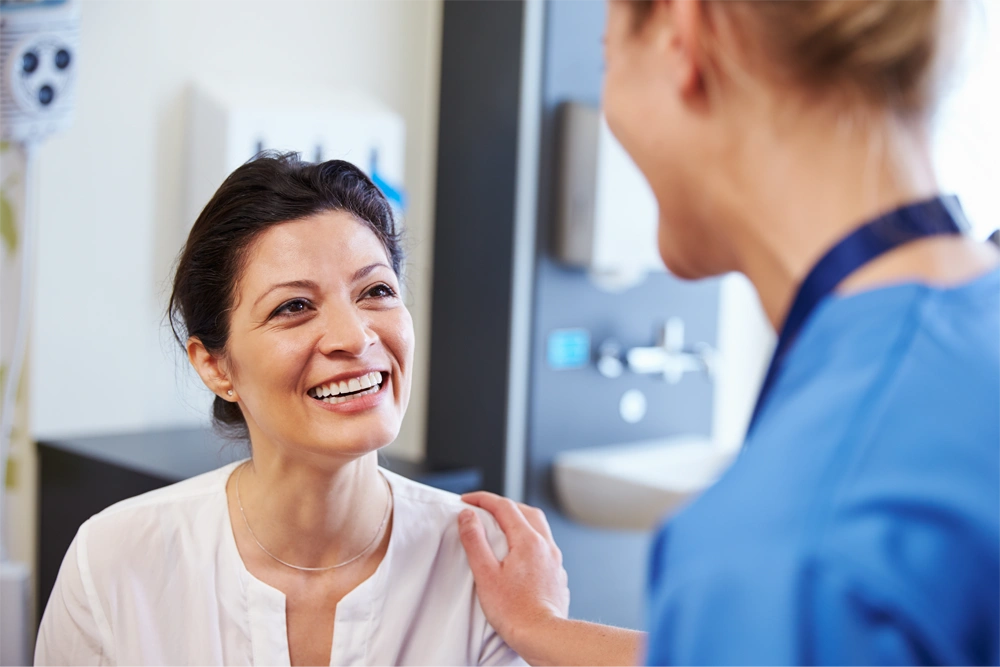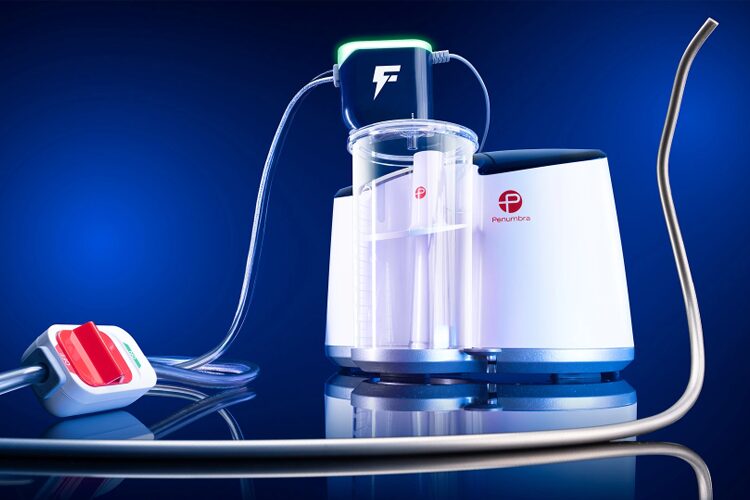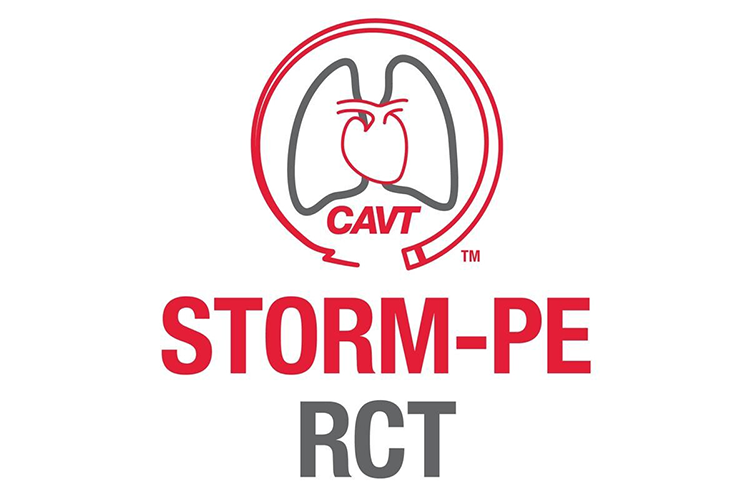PENUMBRA SYSTEM RED – Indication for Use
Penumbra Reperfusion Catheters and Separators
As part of the PENUMBRA SYSTEM, the Reperfusion Catheters and Separators are indicated for use in the revascularization of patients with acute ischemic stroke secondary to intracranial large vessel occlusive disease (within the internal carotid, middle cerebral – M1 and M2 segments, basilar, and vertebral arteries) within 8 hours of symptom onset. Patients who are ineligible for intravenous tissue plasminogen activator (IV t-PA) or who fail IV t-PA therapy are candidates for treatment.
Penumbra Aspiration Tubing
As part of the PENUMBRA SYSTEM, the Penumbra Sterile Aspiration Tubing is indicated to connect the Penumbra Reperfusion Catheters to the Penumbra Aspiration Pump.
Penumbra Aspiration Pump
The Penumbra Aspiration Pump is indicated as a vacuum source for Penumbra Aspiration Systems
Contraindications
There are no known contraindications
Warnings
• The device is intended for single use only. Do not resterilize or reuse. Resterilization and/or Reuse may result in ineffective catheter coating lubrication, which may result in high friction and the inability to access the target neuro vasculature location.
• Do not use kinked or damaged devices. Do not use open or damaged packages. Return all damaged devices and packaging to the manufacturer/distributor.
• Do not use automated high-pressure contrast injection equipment with the Penumbra Reperfusion Catheter because it may damage the device.
• Confirm vessel diameter, and select an appropriate size Penumbra Reperfusion Catheter. Do not use in arteries with diameters smaller or equal to the distal outer diameter of the Penumbra Reperfusion Catheters. Refer to the Reperfusion Catheter labeling for dimensional information.
• Do not advance, retract or use any component of the Penumbra System against resistance without careful assessment of the cause using fluoroscopy. If the cause cannot be determined, withdraw the device or system as a unit. Unrestrained torquing or forced insertion of the catheter or SEPARATOR™ against resistance may result in damage to the device or vessel.
• Do not use the Penumbra System with a pump other than the Penumbra Aspiration Pump.
• Failure to abide by the warnings in this labeling might result in damage to the device coating, which may necessitate intervention or result in serious adverse events.
Precautions
• The Penumbra System should only be used by physicians who have received appropriate training in interventional neuro-endovascular techniques and treatment of acute ischemic stroke.
• Use prior to the “Use By” date.
• Use the Penumbra System in conjunction with fluoroscopic visualization.
• As in all fluoroscopy procedures, consider all necessary precautions to limit patient radiation exposure by using sufficient shielding, reducing fluoroscopy times and modifying radiation technical factors whenever possible.
• Maintain a constant infusion of appropriate flush solution.
• When performing aspiration, ensure that the Penumbra Aspiration Tubing valve is open for only the minimum time needed to remove thrombus. Excessive aspiration or failure to close the Penumbra Aspiration Tubing valve when aspiration is complete is not recommended.
• The Penumbra Separator is not intended for use as a neurovascular guidewire. If repositioning of the Penumbra Reperfusion Catheter is necessary during the revascularization procedure, such reposition should be performed over an appropriate neurovascular guidewire using standard microcatheter and guidewire techniques.
• Administration of anticoagulants and antiplatelets should be suspended until 24 hours post-treatment. Medical management and acute post stroke care should follow the ASA guidelines.1 Any neurological deterioration should be evaluated by urgent CT scan and other evaluations as indicated according to investigator/hospital best practice.
• As in all surgical interventions, monitoring of intra-procedural blood loss is recommended so that appropriate management may be instituted.
• Avoid using alcohol, antiseptic solutions, or other solvents to pre-treat the device because this may cause unpredictable changes in the coating which could affect the device safety and performance.
Potential Adverse Events
Possible complications include, but are not limited to, the following:
allergic reaction and anaphylaxis from contrast media; acute occlusion; air embolism; arteriovenous fistula; death; device malfunction; distal embolization; emboli; false aneurysm formation; hematoma or hemorrhage at access site; inability to completely remove thrombus; infection; intracranial hemorrhage; ischemia; kidney damage from contrast media; neurological deficits including stroke; vessel spasm, thrombosis, dissection, or perforation; radiation exposure that may lead to cataracts, skin reddening, burns, alopecia, or neoplasia from x-ray exposure.



 TODAY.com
TODAY.com










